Yes, this is an interactive map!
Click here for larger version!
Spring is in full swing, native plants are in bloom, Doyer baseball is back with an undefeated vengeance and the 2nd CicLAvia of 2025 is upon us – the 59th evar – this time in the general area of The Militant’s home environs of Central Los Angeles (gotta keep it vague!). This 4.9-mile route is a kinda-sorta new route – its general corridors were based on the September 2018 “Celebrate L.A.!” Los Angeles Philharmonic centennial special edition collab banger (where The Militant himself and Biking in L.A.’s Ted Rogers actually led a live guided Epic CicLAvia Tour for a couple dozen CicLAvia die-hards from Disney Hall to Hollywood and Vine). Though it was an awesome time, it was a massive logistical load for The Militant to bear, so much that he has yet to do another one (but may or may not do again some other time). Anyways, Sunday’s route pretty much duplicates that course sans the alignment east of Vermont. It was originally intended to happen in August 2023, but the unexpected, unprecedented, torrential maelstrom known as Tropical Storm Hilary caused the organizers to cancel that CicLAvia (Okay, so the storm wasn’t really that bad, it was just constant, nonstop rain for a couple days and flooding in certain regions). The CicLAvia folks promised to bring the cancelled Koreatown to Hollywood route back, so here we are — but they made a minor tweak – the mile-long section of the route intended for Melrose Avenue between Western Avenue and Vine Street was transposed half a mile north to Santa Monica Boulevard this time. Why? Because Melrose Avenue is already scheduled for a CicLAvia route later this year, on December 7th (apparently route double-dipping in the same year is a CicLAvia no-no).
As usual — Happy CicLAvia, Go Dodgers, Go Lakers, Go Kings Go, Go Galaxy or LAFC and see you or not see you on the streets!
If you found this Epic CicLAvia Tour guide useful and visit any of these sites, please add the #EpicCicLAviaTour hashtag to any social media post that includes it. The Militant will be glad to re-tweet (speaking of which, don’t forget to follow The Militant on Twitter, Bluesky and Instagram!)!
And if you appreciate The Militant’s work, kick him a little love via PayPal! He *hates* asking for money, but you know how it is these days…A Militant’s gotta pay his bills! He sacrifices a lot of his time to do this! Your support is much appreciated!
Support The Militant Angeleno!
https://www.paypal.com/donate/?hosted_button_id=K5XC5AM9G33K8
Thank you Neil Rampal and Eddie Arias for your support since the last CicLAvia!
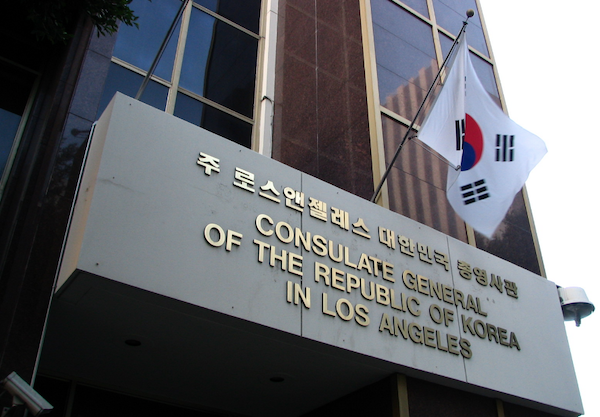
1. Consulate Row
Various locations along Wilshire Blvd between Vermont and Crenshaw
Some 62 countries have consular offices in the Los Angeles area and 41 of them have addresses on Wilshire Boulevard. Proximity to various foreign financial institutions on Wilshire, as well as nearby Hancock Park, where many consul-generals have traditionally resided, are the main reasons for such a high concentration of consulates on this stretch of Wilshire. The consulate offices for Bangladesh, Bolivia, El Salvador, Ethiopia, Guatemala, Honduras, Indonesia, South Korea, Nicaragua, Peru, The Philippines, Sri Lanka and Taiwan are all located on Wilshire between Vermont and Crenshaw. Many of them display their national flags in front of their respective office buildings. How many can you spot during CicLAvia?
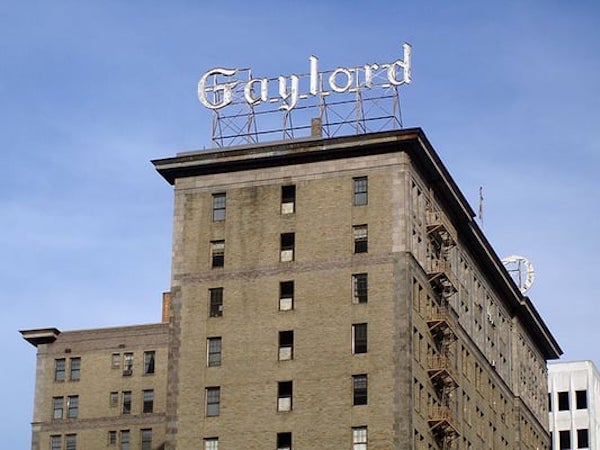
2. Gaylord Apartments
1924
3355 Wilshire Blvd
Though the century-old building’s prominent neon sign has been source of many a snicker by immature junior high school kids, this building represents some serious history. It was named after Wilshire Boulevard’s namesake, Henry Gaylord Wilshire, who was known as a wealthy real estate developer and outspoken socialist (Does that make sense?), who donated a 35-acre strip of barley fields to the City of Los Angeles on the condition that it would be free from railroads or trucking. The building itself, designed by J.B. Lilly and P.B. Fletcher, is a 13-story Italian Renaissance-style apartment building that actor John Barrymore (a.k.a. Drew’s grandpa) and then-presidential candidate Richard Nixon once called home. The ground-floor tenant, the HMS Bounty restaurant/bar, occupies the space that was originally the building’s grand ballroom.
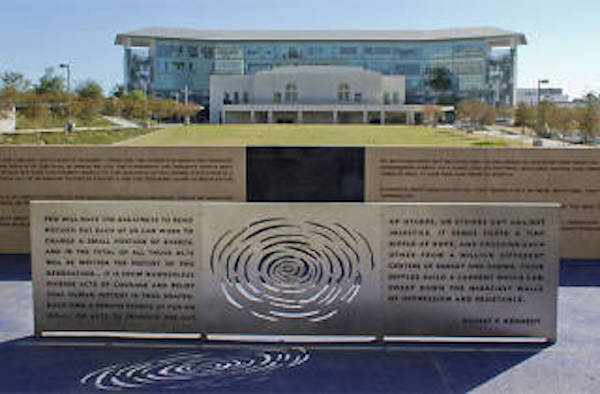
3. Robert F. Kennedy Inspiration Park/Ambassador Hotel Site
2010
Wilshire Blvd between Catalina Street and Mariposa Avenue
The Militant wrote a post in 2010 about this unique public space dedicated to Sen. Robert F. Kennedy (that’s RFK senior…), who was assassinated just yards away at the Ambassador Hotel, which was demolished in 2005 and where the LAUSD’s sprawling and costly RFK Community Schools campus now stands. There’s Kennedy quotes on public art installations and benches for you to chill on. There’s also speakers playing recordings of some of the jazz music that was performed at the hotel’s famed Cocoanut Grove swing and jazz club.
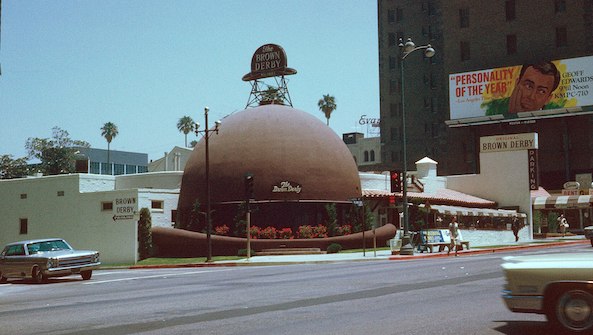
4. Wilshire Brown Derby Site
1926
3427 and 3377 Wilshire Blvd
The now-defunct “The Brown Derby” local chain of restaurants were synonymous with Hollywood glitz and glamour. The Wilshire Boulevard location was the first of four (the others were in Hollywood, Beverly Hills and Los Feliz). In close proximity to The Ambassador Hotel and its Cocoanut Grove swing/jazz club, this was the original hipster joint back in the day, only back then the hipsters were actually cool and looked good. In 1937 the building was moved across the street and closed in 1975. In 1980, a shopping center was built on the site and the iconic dome structure was moved a few yards north and incorporated into the shopping center that exists today. It’s situated on the third floor, above The Boiling Crab seafood restaurant. It’s something to ponder on while you wait 45 minutes for your table.
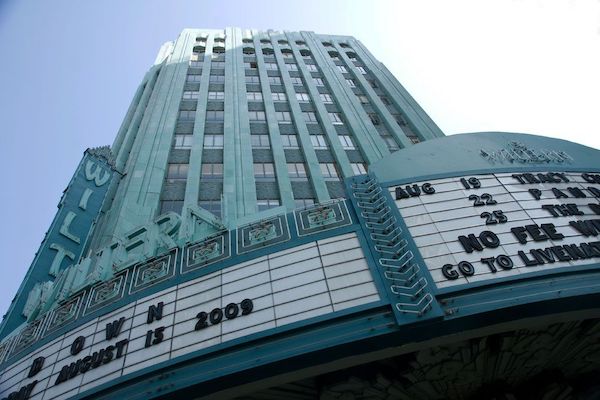
5. Wiltern Theatre/Pellissier Building
1931
Wilshire Blvd and Western Avenue (duh…), Koreatown
The 12-story structure, designed by Stiles O. Clements, is Los Angeles’ emerald-green temple to all that is Art Deco. Originally operating as the “Warner Theatre” (Specifically the Western Avenue location of Warner Bros. chain of movie theaters; The Warner Theatre in San Pedro is another example), The Wiltern (named so since 1935) has seen many cycles of decay and rebirth, most recently in the 1980s, when preservationists renovated the theatre to a performing arts venue. The contemporary Wiltern Theatre known for concerts has been operating since 1985.
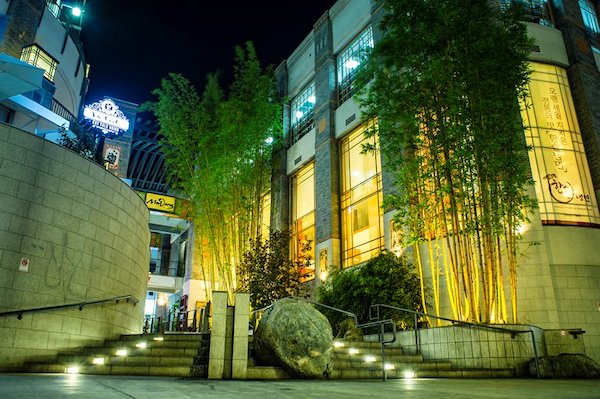
6. MaDang Courtyard Mall
2010
621 S. Western Ave, Koreatown
The heart of K-town is essentially the revived district once known as Wilshire Center, a mid-rise commercial district which emerged in the mid-1960s, filling in the commercial real estate gap between Downtown and Miracle Mile. By the late 1980s, the district had fallen into disarray, with many businesses closing down or moving out, culminating around the time of the 1992 Riots (the iconic Bullocks Wilshire closed down in 1993). With the old guard having moved out, it allowed opportunities for the then-scattered Korean business community, fueled by an abundant supply of investment money from South Korea, to move into the vacant retail and office spaces and expand Koreatown into the large district that exists today. Enter MaDang (“yard” or “garden” in Korean) Courtyard, which opened in 2010. This dense, triple-story urban mall represents not only the modern Koreatown, but a more of a visual semblance of Seoul, as opposed to the re-purposed commercial spaces of the old Wilshire Center. Anchored by the CGV Cinemas multiplex, which screens current Hollywood features, Korean films and Korean-subtitled versions of mainstream blockbusters, you can’t get more K-town than that (for a non-food establishment). But speaking of food establishment, there’s also the very well-stocked H Mart supermarket, a Paris Baguette (despite the francophone name, it’s a South Korean bakery cafe chain), the Japanese import discount retailer Daiso (picture a Nippon version of the 99 Cents Only store), pastry chain Beard Papa’s, Korean fried chicken restaurant Pelicana and much more. It’s like a trip across the Pacific (minus the jet-lag).
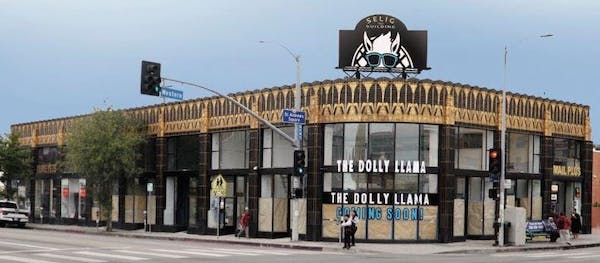
7. Selig Building
1931
269 S. Western Ave, Koreatown
This single-story black and gold terra cotta Art Deco storefront building (like total LAFC style, yo!) designed by Arthur Harvey was originally the Alvin C. Selig men’s formalware store when it opened in the 1930s and later became a Crocker National Bank branch and video store. Today, the newly-renovated building is subdivided into separate retail spaces.
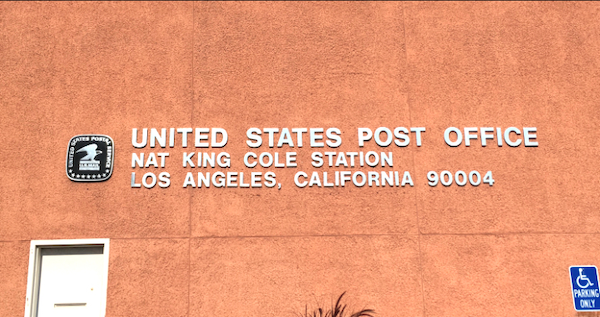
8. Nat King Cole US Post Office
1987 (Dedicated 2002)
265 S. Western Ave, Koreatown
As you get your kicks on the CicLAvia route, just north of 3rd Street is a United States Post Office, formerly known as the Oakwood Station. In 2002 it was dedicated to singer Nat King Cole in 2002 For Sentimental Reasons, who lived nearby on Murfield Rd. and 4th Street in Hancock Park from 1948 to his death in 1965. This actual building might not be that Unforgettable, as facility is slated to move to a new location nearby as the current building is slated to be demolished for redevelopment.
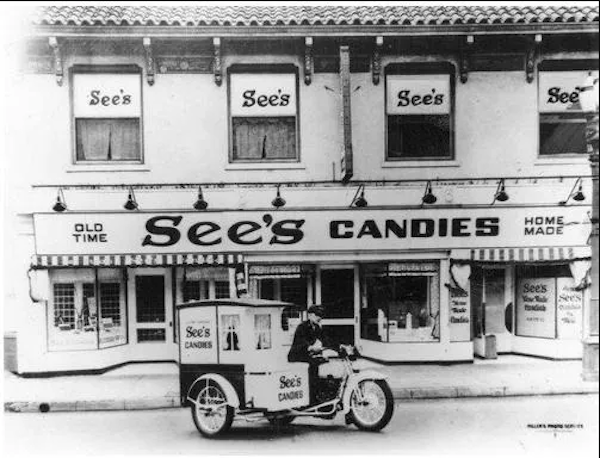
9. Original Home of See’s Candies
1921
135 N. Western Ave., Koreatown
Canadian immigrant Charles See, along with his wife Florence, their children and his mother Mary, moved to Los Angeles where they opened a candy shop at this location in November, 1921 using Mary’s recipes from when she helped run her late husband’s hotel in southern Ontario. The operation soon blossomed into multiple stores, even booming during the Great Depression, and can be found in 17 states. The candies are made here in California, at its factories on La Cienega Blvd and in South San Francisco. The original See’s Candies location is currently the Coin de la Rue cafe/bakery and a Los Angeles City historic plaque is placed on a streetlight in front of the building.
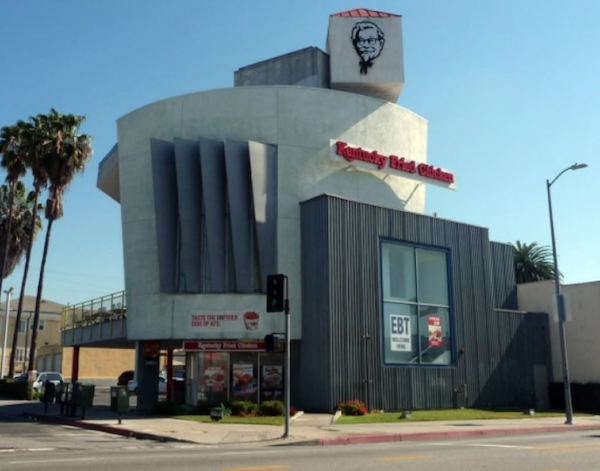
10. Postmodern KFC
1990
340 N Western Ave., Koreatown
Designed by Elyse Grinstein and Jeffrey Daniels (former staff architects at Frank Gehry’s firm), the two-story building is a postmodern representation of not just a bucket of chicken, but a chicken itself. It is also one of the few KFC franchises around to still bear the full “Kentucky Fried Chicken” name signage.
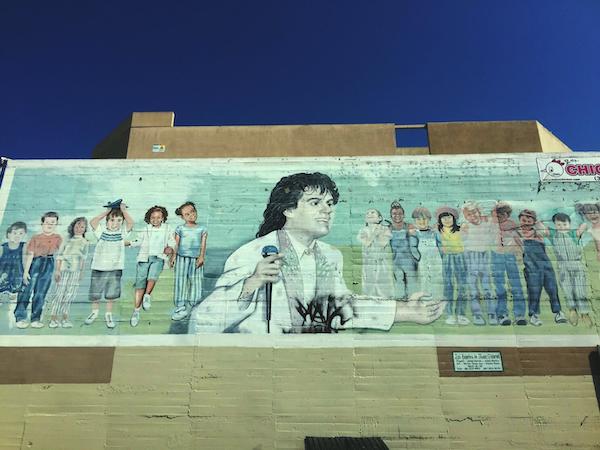
11. Juan Gabriel Mural
2002
365 N. Western Ave., Koreatown
Directly across the street from the Postmodern KFC is a sun-bleached mural of a dark-haired vocalist in a mullet. No, it’s not ’80s British crooner Paul Young nor is it Donny Osmond, but it’s the likeness of legendary Mexican singer Juan Gabriel, entitled, “Los Angeles de Juan Gabriel.” Commissioned by one of Gabriel’s fan clubs, it was painted by El Salvadoran immigrant Hector Ponce, a fan of the singer who did the mural gratis, which took him about four days to make in 2002. Popular with many generations of fans, the “Amor Eterno” singer has had a long-standing relationship with Los Angeles, having maintained one of his residences here, a star on the Hollywood Walk of Fame and a 1986 “Juan Gabriel Day” proclamation by then-mayor Tom Bradley. The singer died in Santa Monica of a heart attack in 2016.
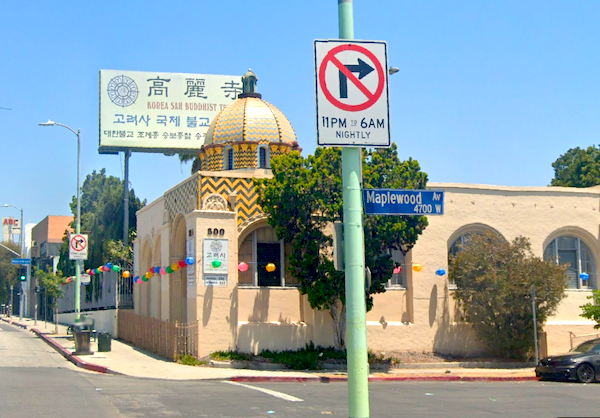
12. Janss Investment Co. Uptown Branch Bldg.
1928
500 N. Western Ave., Koreatown
This unique Byzantine domed building was designed by Percy Parke Lewis (can’t lose?), who also designed the Art Deco Village Theatre in Westwood, was built as the Janss Investment Company’s Uptown Branch office (this was once “Uptown”? Well Uptown Funk gonna give it to ya). Today it’s repurposed as the Korea Sah Buddhist Temple.
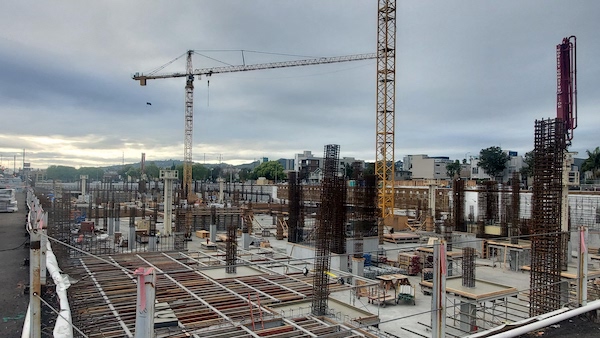
13. Echelon Studios/Site of Sears Roebuck Hollywood
2026
5601 Santa Monica Blvd., Hollywood
You may or may not have already passed by the Big-Ass Hole In The Ground along Santa Monica Boulevard in Hollywood. If not, you surely will pass by it along the CicLAvia route. It’s currently the construction site for Echelon Studios Hollywood, an independently-owned film and media production studio featuring 110,000 square feet of soundstages, creative space and offices, intended to provide state-of-the-art film/TV/online media production facilities in Hollywood proper and preserve local production industry jobs. The site was first developed nearly a century ago when Chicago-based Sears Roebuck and Co. opened their first Sears department store in California at this location in 1928. It operated for 80 years (Lil’ Mil has fond childhood memories of his parents taking him shopping here, he fondly remembers the popcorn counter in the lower level) before shutting down in Spring 2008. Initially, a mixed-use retail/residential project called Paseo Plaza was proposed to replace it in the 2010s, but it lingered in development limbo until the Echelon plan came out of nowhere sometime in 2021.
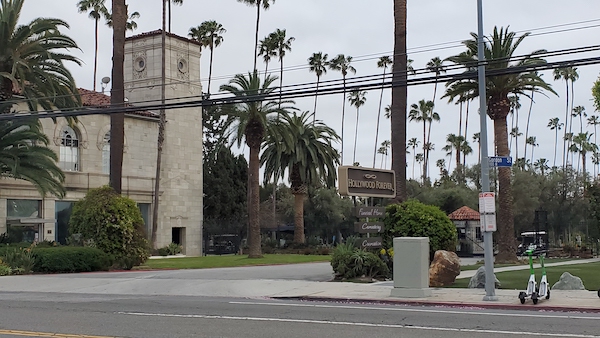
14. Hollywood Forever Cemetery
1899
6000 Santa Monica Blvd., Hollywood
“Pssst! I see dead people!” You may already have come here on many a Summer night to watch movies, but Hollywood’s first and only home of the departed has been around for over one and a quarter centuries, opening in 1899 as Hollywood Memorial Park. The first person interred here was a local farmer’s wife named Highland Price – the namesake of Highland Avenue. It’s also the final resting place of influential Angelenos whose names you’ve definitely heard before, such as Col. Griffith J. Griffith, Hollywood pioneers Cornelius Cole, Hobart Whitley and Harvey Wilcox, as well as Los Angeles Times founder Harrison Gray Otis. And of course, celebs galore lie here, from director Cecil B. DeMille to legendary actor Rudolph Valentino to ‘Looney Tunes’ voice actor Mel Blanc (with the greatest epitaph evar) to rocker Joey Ramone. True to its name, the cemetery looks towards the future with the recent addition of its 100 foot-tall highrise Gower Court Mausoleum, designed to accommodate 13,000 people to remain in Hollywood…forever (you may or may not end up here one day!). The Militant took a closer look at Hollywood Forever on his old blog back in 2012.
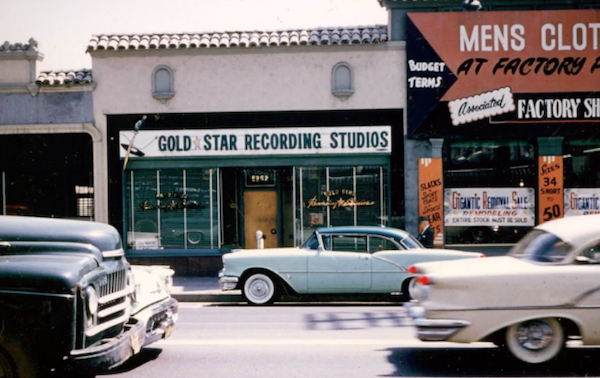
15. Site of Gold Star Recording Studios
1950-1984
6252 Santa Monica Blvd, Hollywood
This site (currently occupied by the Starbucks and the parking spaces in front of it) was once home of Gold Star Recording Studios, which lasted from the 1950s to the early 1980s. In the 1960s, it was most associated with (pre-murderer era) producer Phil Spector, who recorded The Beach Boys’ hit “Good Vibrations” here, as well as parts of their legendary Pet Sounds album. The studio was used by countless artists such as Ritchie Valens, Herb Alpert, Sonny and Cher, The Monkees, The Go-Gos, The Chipmunks, John Lennon, The Who and Jimi Hendrix. The Militant covered this spot back in 2008.
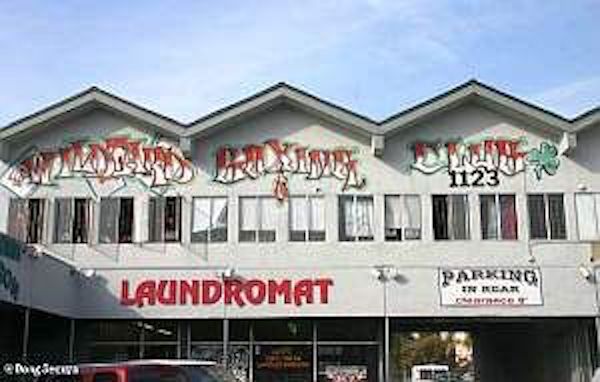
16. Wild Card Boxing Gym
1995
1123 N. Vine St, Hollywood
Founded and still operated by legendary boxing trainer Freddie Roach, this facility has been the choice training spot for amateur and professional boxers for the past two decades. Boxers such as Mike Tyson, Oscar De La Hoya, Manny Pacquiao, Miguel Cotto and Julio Cesar Chavez, among many, have trained in this 2nd-floor gym perched above a nondescript minimall. And oh yeah, just a warning, this place smells like nasty-ass humid BO. The Militant was here back in 2007.
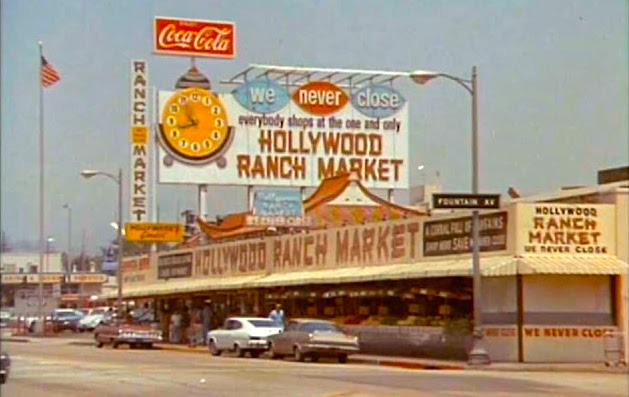
17. Site of Hollywood Ranch Market
1929-1981
1240 Vine St, Hollywood
Opened as the Mandarin Market in 1929 (pre-dating its more famous and celebrated cousin down at 3rd and Fairfax), the Hollywood Ranch Market was one of Hollywood’s biggest retail attractions, featuring a 24-hour (yes, Hollywood had late night establishments even back then) indoor marketplace (the large neon sign featured the words, “We Never Close”) selling fresh produce, groceries, and offering services such as check cashing and shoe shining. It was also featured in many movies and television shows back in the day. Unfortunately, the market burned down in a fire in 1981 and was replaced with the Office Depot-anchored shopping center that stands today.
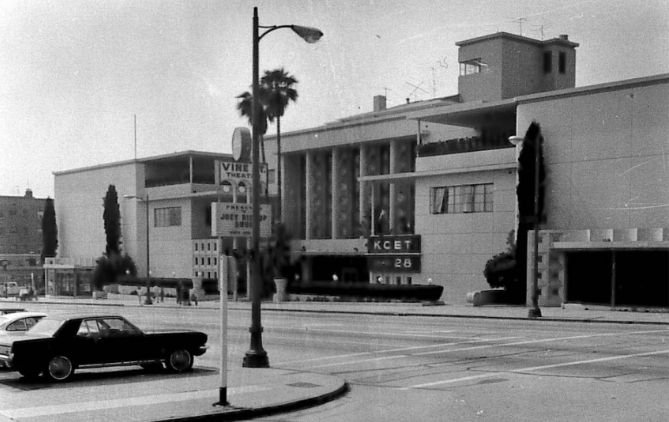
18. Pickford Center/Mutual-Don Lee Studios
1948
1313 N. Vine St, Hollywood
Functioning today as the Academy of Motion Picture Arts and Science’s Pickford Center for Motion Picture Study, this is the oldest building in Hollywood built for television production. It opened in 1948 as the headquarters of the old Mutual-Don Lee (that’s Lee as in Mt. Lee, home of the Hollywood Sign) broadcast network, which birthed an early TV station, KTSL (for Thomas S. Lee, Don’s son). In 1950, CBS took over the operation and years later it was the home of KHJ (now KCAL) Channel 9. In 1964, public TV station KCET began broadcasting here until it moved 3 1/2 miles east to Los Feliz in 1970. ABC took over the facility until the 1990s, when AIDS Project L.A. located its offices at the former studio. The Academy has used the old Don Lee studios since 2002.
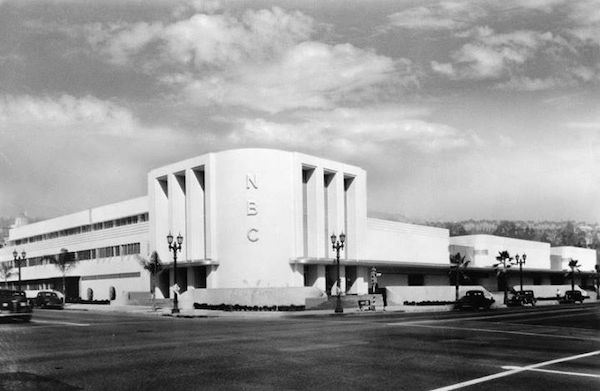
19. Site of NBC Studios
1938-1962
1500 N. Vine St, Hollywood
Before The Peacock Network was associated with “Beautiful Downtown Burbank,” it called the northeast corner of Sunset Boulevard and Vine Street its (West Coast) home. It began life as Radio City West (after NYC’s Radio City), and the broadcast facility became influential in the industry, prompting rivals ABC and CBS to locate their western headquarters in close proximity. Local affiliate KNBC channel 4 was born here in 1949 (then known as KNBH, later becoming KRCA in 1954). It took on the KNBC call sign when the operation moved out to The ‘Burb[ank] in 1962. The iconic Streamline Moderne studio building was torn down and replaced with a Home Savings and Loan bank branch (now operating today as a Chase Bank). The Sunset & Vine retail/residential complex across the street gave an architectural nod to the NBC building with Streamline Moderne touches).
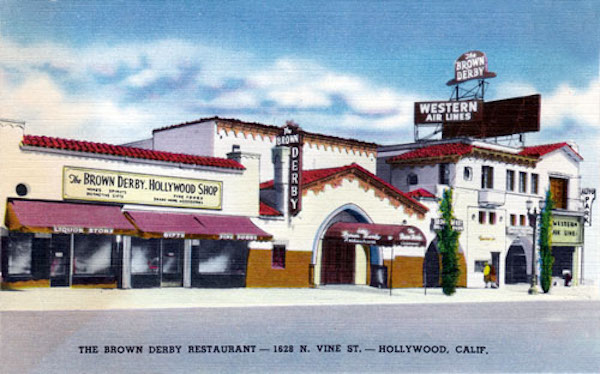
20. Hollywood Brown Derby Site/Metro Bike Hub
1929-1985/2017
1628 N. Vine St, Hollywood
Did you know thatMetro‘s Hollywood Bike Hub facility, which opened in 2017, stands on the very site of the Hollywood Brown Derby restaurant? This was the second location of the legendary local restaurant chain. (See Point #4) Back in the Hollywood Heyday of the first half of the 20th century, it was like the lunch and dining hotspot for famous film stars and industry moguls. But perhaps the biggest star associated with the Hollywood Brown Derby was the Cobb Salad, invented here circa 1937. Named after Brown Derby co-owner Robert Cobb, it was an improvised mish-mash of leftover salad ingredients, either made for theater mogul Sid Graumann or by Cobb himself as a late-night meal (depending on which version of the legend). The restaurant closed down in 1985 and the iconic Mediterranean-style structure was burned in a fire two years later. It was finally demolished in the mid-1990s after the Northridge Earthquake.
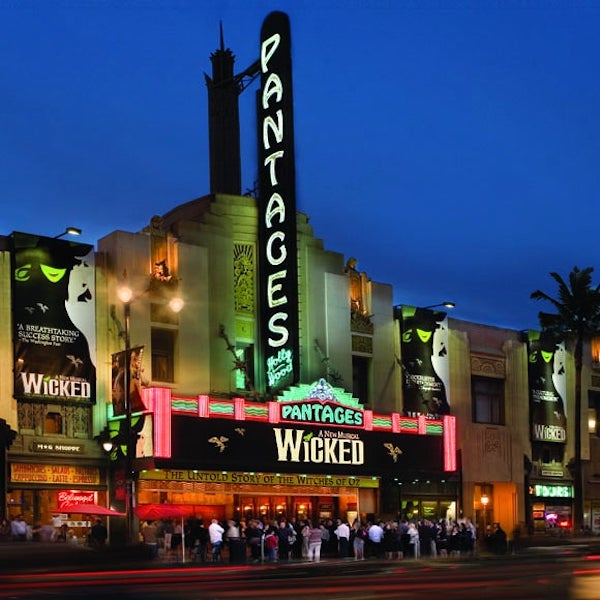
21. Hollywood Pantages Theatre
1930
6233 Hollywood Blvd, Hollywood
Opened in 1930, this was actually the second theatre in Los Angeles bearing the Pantages name (the first one, still standing on 7th and Hill streets, opened a decade earlier and was renamed the Warner Theatre in 1929). This was also the last theatre built bearing the name of vaudeville promoter Alexander Pantages, who ran a chain of 84 theaters across North America back in the day. The iconic Art Deco venue designed by B. Marcus Priteca (who also drew up the DTLA Pantages, as well as other theaters) actually functioned as a cinema for most of its history until 1977 when it ran the Broadway musical Bubbling Brown Sugar and the rest is Jazz Hands history. But did you know that the building constructed nearly 90 years ago is actually incomplete? It was originally supposed to stand 12 stories tall with offices. There have been recent proposals to complete the structure.
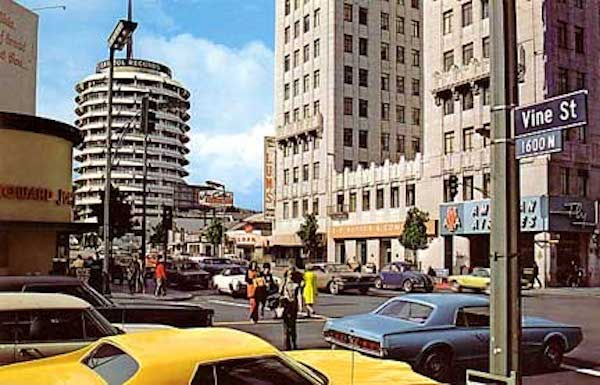
22. Hollywood and Vine
1887
Hollywood Blvd and Vine St (duh), Hollywood
Originally part of Hollywood pioneers Horace and Ida Wilcox’s ranch (Ida was the one who dubbed the former Cahuenga Valley (named after the Tongva village known as Cahug-na) the name “Hollywood”), two dirt roads were cut through it: the east-west Prospect Avenue and Weyse Avenue running north-south. In 1903, a Methodist church was built on the southeast corner, soon followed by a number of businesses. When Hollywood was annexed to Los Angeles in 1910, Prospect and Weyse went all showbiz by changing its name to Hollywood Boulevard and Vine Street and a decade later, the corner became world famous due to being a hub of radio and movie-related businesses. The Pacific Electric Railway’s Western and Franlin Ave. Line even terminated here during that period from 1908 to 1940. Today it is arguably the World’s Most Famous Intersection (seriously, try to name a more famous corner), and in July of 2018, a diagonal “scramble” pedestrian intersection was installed by the City.
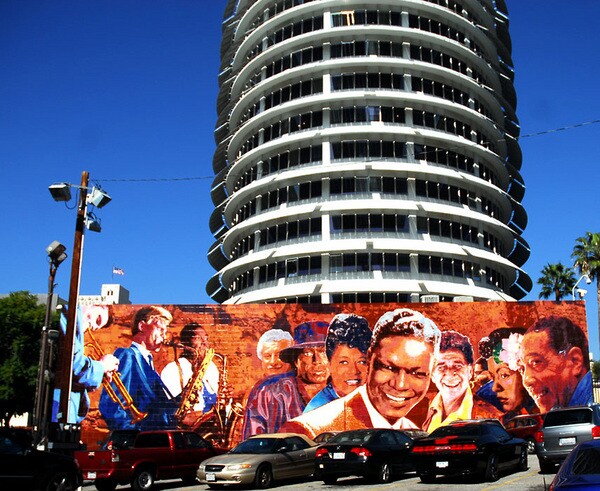
23. Capitol Records Building/Hollywood Jazz Mural
1956/1990
1750 N. Vine St, Hollywood
You may or may not already know that the Capitol Records building is: a) The world’s first circular office building (designed by Los Angeles native Louis Naidorf of Welton Becket associates — the same architectural firm that designed the Dorothy Chandler Pavilion (Point #1), at the opposite end of the CicLAvia tour (How’s that for full circle [pumps fist]?)); b) Designed like a stack of records (actually, NOT!); and c) The FAA warning light atop its spire spells “HOLLYWOOD” in Morse Code. What you probably didn’t know was that Capitol Records, founded in 1942, was the first major record label headquartered in the West Coast, and that the building was largely financed by the profits made from record sales of its premier artist at the time, Nat King Cole (See Point #8). Also, this is one of two skyscrapers in Los Angeles with a spire, the second being the Wilshire Grand Center. And speaking of Nat King Cole, Capitol’s classic crooner is depicted front and center in the 88 foot-wide mural facing the building’s south parking lot, “Hollywood Jazz, 1948-1972” by African American muralist (and Lynwood native) Richard Wyatt, Jr. painted in 1990 and restored in 2011.
Did you enjoy this guide? Learned something new? Kick The Militant Angeleno a little love via PayPal!
Support The Militant Angeleno:
https://www.paypal.com/donate/?hosted_button_id=K5XC5AM9G33K8
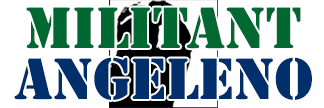
You must be logged in to post a comment.